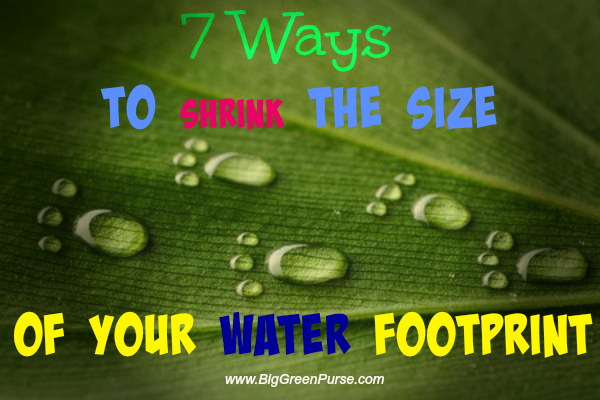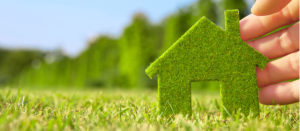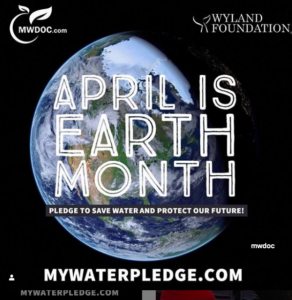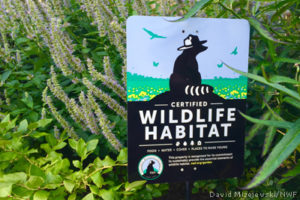You’ve probably heard about your carbon footprint. That’s the amount of carbon dioxide you generate when you use fossil fuels, like coal, oil, gasoline, and natural gas. Your carbon footprint matters because it indicates what you’re contributing to the global problem of climate change.
Knowing your carbon footprint can help you figure out where you can save energy and shrink your footprint overall. If we all took our footprint down a few sizes, we’d make a big dent in the rate that climate change is increasing. The same goes for water.
Why Shrink the Size of Your Water Footprint?
In many parts of the U.S. and in many regions of the world, clean water supplies are shrinking so rapidly that knowing our water footprint has become essential if we’re going to use the water we have wisely.
√ Only 1 percent of all the world’s water can be used for drinking (nearly 97% is salty, and the remaining 2% is tied up in the polar ice caps and glaciers).
√ There’s no “new” water. Though H2O cycles through a series of phases – as water on the ground or under ground, precipitation as rain, snow or sleet, and back again – the actual amount of water on earth is finite. We have just what we have, so we need to use it wisely.
√ You use more than you think. Right now, in America, on an average day, you’ll probably use about ninety gallons of water, which amounts to about 107,000 gallons for the year – enough to fill your bathtub almost 3,000 times.
We use water to grow lawns, wash dishes, rinse food, shower and shave, and let the tap run when we brush our teeth. About 14 percent leaks down the drain.
Older toilets waste more clean water in a single flush than many Africans use in an entire day.
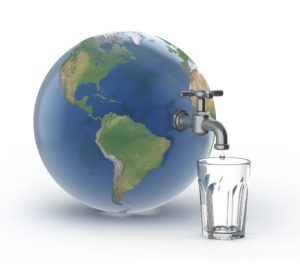
We use water indirectly, too. Every product we buy has its own water footprint, and part of that footprint adds to ours every time we consume.
If you’re a “meat and potatoes” kind of person who loves to shop, your water footprint will be significantly larger than that of a vegetarian who is into recycling, swapping and sharing.
How to Measure Your Water Footprint
→ Read Your Water Bill. The easiest way to measure your direct water footprint is by reading your water bill. Most of us receive a monthly or quarterly bill from the utility company that supplies us with water. Look for these two pieces of vital information in every bill:
1) Your “average daily consumption” that is typical per person in your area.
2) How much water per person per day is being consumed in your household. My bill also shows how much water overall I used during the billing period, which in our area is every three months. I keep my bills for a year and compare them from bill to bill. Doing so, I can see both how much water I use and when I use the most.
My water usage is actually only about 50 gallons per person per day, compared to the “typical” person in our area, which is 70.
I also use almost twice as much water in the summer as I do in the winter, probably because I’m making more iced tea, taking more showers to cool off when it’s hot and muggy outside, and watering my garden.
Confused?
If you find your water bill confusing, you can try the clever Water Footprint Calculator created by Grace Communications Foundation. There are many calculators online, but I like this one because it’s got state-by-state options and the graphics are clever. When I took it, it calculated that I use about half as much water as the average American! It also suggests these ways to reduce the size of my water footprint even more:
7 Ways to Shrink Your Water Footprint
1) Take shorter showers. For every minute I shorten my shower, I can save 2.5 to 10 gallons of water (depending on how much water is coming out of the shower head).
2) Turn off the faucet when brushing teeth. That could save 4 or more gallons of water each day.
3) Use a dishwasher. Believe it or not, dishwashers are far more efficient than hand washing dishes, because you can wash so many more dishes at once. Hand washing one load of dishes can use as much as 20 gallons of water, compared to an energy-efficient dishwasher that clocks in at as little as 4.5 gallons. NOTE: If you must wash dishes by hand, don’t leave the water running nonstop. Fill a pot with rinse water, use a sponge to rinse off all the dishes, then soap them up and rinse them off.
4) Wash clothes less. I don’t mean that you should wear dirty clothes! But much of our attire – like blue jeans, sweaters, dress clothes – don’t need to be laundered if they’ve only been worn once. Washing less will extend the life of your clothes, as well.

6) Replace your thirsty lawn with native plants that require less water. If you must have a lawn, water it deeply and during the cooler parts of the day, to promote healthier root growth and to make sure most of the water goes into the lawn rather than evaporating into the air. If planting new plants, choose those that can tolerate the amount of rainfall normal for your area. Don’t miss this post:
8 Best Natural Alternatives to Growing Grass
7) Eat less meat. I’m not much of a meat eater to begin with, which is good when it comes to water. FYI, it takes over 1700 gallons of water to produce just one pound of beef, so switching to a plant-based diet helps reduce your water footprint significantly.
To get a sense of how much water other products use, check out this handy reference at National Geographic.
And remember: don’t just pay your water bill the next time it comes. Read it closely to see how much water you’re really using.


